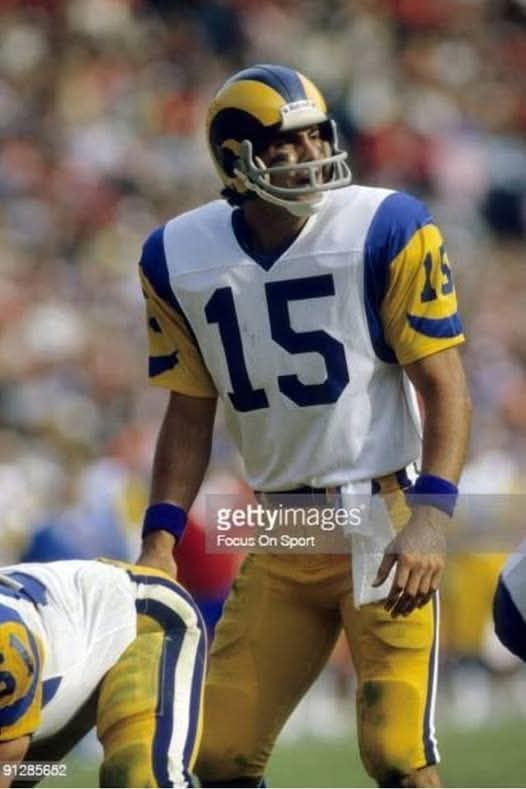Long before modern quarterback icons graced the turf of SoFi Stadium, the Los Angeles Rams’ story was shaped by a different breed of athlete—one whose path zigzagged through some of the most storied programs in college and professional football. That athlete’s name? A gridiron journeyman whose timeline reads like a football encyclopedia—University of California Golden Bears, University of Nebraska Cornhuskers, the Los Angeles Rams, and the Montreal Alouettes.
It all began in the fall of 1972, when the young quarterback first took the field for the Golden Bears of California. His raw arm strength, coupled with an intuitive feel for pressure, made him a compelling presence in the Pac-8. But it wasn’t until he transferred to the University of Nebraska that he truly came into his own. Between 1975 and 1976, he helped the Cornhuskers maintain their dominance under the legendary coach Tom Osborne. He wasn’t just a system quarterback—he was the heartbeat of a Nebraska offense that defined toughness, leadership, and consistent execution.
Scouts took notice. By 1977, he was drafted by the Los Angeles Rams, a team hungry for quarterback depth and a transitional leader who could carry them into the new decade. He wore the horns proudly from 1977 to 1980, standing in the shadow of aging veterans and delivering in clutch moments when called upon. He was never a Pro Bowler, but among teammates and coaches, he earned the moniker of “The Rock,” for his unwavering poise and willingness to shoulder responsibility regardless of the stakes.
When the NFL doors temporarily closed in 1981, he packed his bags and headed north to join the Montreal Alouettes in the Canadian Football League. The cold, the rules, the field dimensions—none of it phased him. For that one season, he brought a distinctly American flair to the CFL’s wide-open game, dazzling fans with deep sideline throws and quick-footed audibles that kept defenses guessing.
Then came a second stint with the Rams from 1982 to 1984, a rare return that few quarterbacks experience. But for the Rams, it made perfect sense. He was family. A man who had lived the system, knew the city, and understood the grind of the league. He offered mentorship to rookies, steadiness during injuries, and above all else, class. In a sport often defined by ego, he was humility in motion.
Though his name may not be chanted in highlight reels or embossed in Hall of Fame walls, his legacy remains etched in the DNA of every team he touched. He represented the soul of 1970s and early ’80s football—rugged, adaptable, passionate, and supremely committed.
Today, when Rams fans celebrate past quarterbacks, many remember the Ferragamos, the Bulgers, and the Warners. But true students of the game know that the franchise’s evolution owes much to those quieter warriors—the ones who showed up every Sunday, every practice, every meeting—ready to lead.
This man’s journey from California to Nebraska, from the bright lights of LA to the snow-covered fields of Montreal, and back again, tells a story not just of football, but of grit, perseverance, and love for the game.
